This is the twenty-sixth post in a series about my possible line of descent from Eleanor of Aquitaine. In the first post, I explained how I discovered the possible line, and how I am going to verify it one generation at a time. In the last post, I proved that my twenty-first great-grandmother Margaret of Flanders, Duchess of Brabant, was the daughter of Guy of Dampierre, Count of Flanders.
Biographical information
Guy of Dampierre was born in 1226 as the second son William of Dampierre and Margaret, countess of Flanders and Hainaut.
In June of 1246, Guy of Dampierre married Matilda of Béthune. She was the daughter and heiress of Robert, lord of Béthune and Dendermonde—domains that Guy inherited after his father-in-law died in 1248. Matilda and Guy had eight children together, including Margaret of Flanders, who would marry John I, Duke of Brabant (see generation 24).
In 1251, Guy succeeded his deceased elder brother as the titular Count of Flanders though their mother continued to rule. Their territories were expanded by acquiring several adjacent domains, such as Bornem, Kamerijk, Broekburg, and Namur. Guy often had to rely on his mother to repay the huge debts he incurred.
The possession of Namur was jeopardized when the count of Luxembourg conquered the city in 1257. After Guy was widowed in 1263, he regained control of Namur via marriage rather than through military intervention, by marrying Isabelle, the daughter of the count of Luxembourg. Guy and Isabelle had eleven children together.
Meanwhile, Outremer (the crusader states and Jerusalem) was under threat from sultan Baibars. Baibars destroyed Latin cities from 1265 onward and conquered the crusader state of Antioch in 1268. This inspired the Eighth Crusade, which Guy of Dampierre joined. He left Flanders in April 1270. En route to Jerusalem, the crusader army made a stop in Tunis—a fatal mistake. The hot climate quickly led to an outbreak of illness, affecting many of the crusaders, including Louis IX, King of France, who died on 25 August 1270. The demoralized crusader army abandoned their mission and most returned to their lands, including Guy of Dampierre. He arrived back in Flanders on 31 May 1271.
In December 1278, his mother transferred the rule of Flanders to Guy. He had to deal with trade conflicts with England over wool and repayments of loans, and domestic disputes with cities who wanted greater privileges.
Flanders became caught between England and France, who were at war at the time. Guy tried to negotiate a marriage for his daughter Philippine to the English King’s son; infuriating the French King. Guy and Philippine were imprisoned. Guy was released after several months but Philippine died in a French prison. France closed the Flemish harbors for any trade with England and forced the Flemish count to recognize the French King as their overlord.
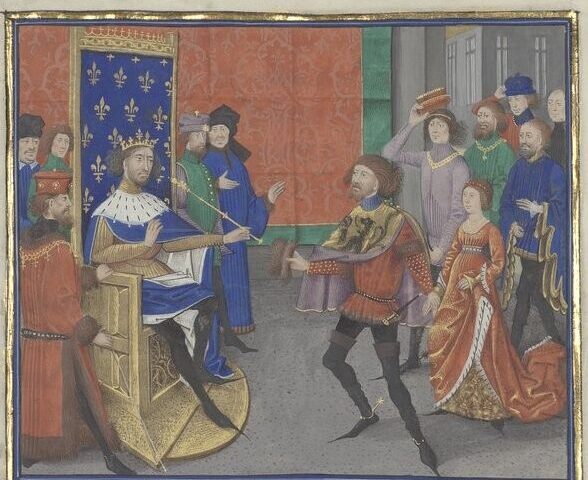
Guy of Flanders doing homage to the King of France for Flanders4
In 1297, Guy sent a letter denouncing the French King, reclaiming Flanders’ independence. France invaded Flanders, while English troops arrived to lend support to the count. The English King took the opportunity to knight several nobles, including the son-in-law of the count, John II, Duke of Brabant.
In 1299, the aging Guy of Dampierre abdicated as count of Flanders in favor of his son Robert, who could more vigorously lead the fight against France. In 1300, Guy was again imprisoned by the French King. During his imprisonment, the Flemish troops defeated the French in the Battle of the Golden Spurs. Guy died in prison in 1305.5
Guy of Dampierre, son of Margaret of Flanders
The history books used for the biographical sketch above do not use original records as sources, but rely on other published works. To prove the genealogical relationships, original documents were consulted to verify the information from the books.
Dispute between Avesnes and Dampierre children of Margaret of Flanders
Several charters document the dispute between the children of Margaret, countess of Flanders and Hainaut over the succession of Flanders and Hainaut. These charters mention Guy as her son by William of Dampierre.
A charter of March 1245 documents the dispute between William, Guy, John and Joan, children of Margaret of Flanders and and William of Dampierre, and John and Baldwin, children of the same Margaret of Flanders and Bouchard of Avesnes.7
In January 1246, John and Baldwin of Avesnes, William, Guy, and John of Dampierre, brothers, agreed to binding arbitration by the French king Louis about the succession in their mother’s domains. The charter describes John and Baldwin of Avesnes as the sons of Bouchard of Avesnes and Margaret, countess of Flanders and Hainaut, and William, Guy, and John as sons of William of Dampierre and the same countess.8
In July 1246, Louis, King of France, and the papal legate passed judgement in the dispute between William, Guy, and John of Dampierre with their brothers John and Baldwin of Avesnes. John of Avesnes would succeed their mother as count of Hainaut, and William of Dampierre would succeed her as count of Flanders.9
Marriages of Guy of Flanders
In a charter of 2 February 1246, Margaret, countess of Flanders, announced the agreement she made with Robert, lord of Bethune and advocate of Arras, about the marriage of their respective children Guy and Mathilda.10 Two years later, on 21 June 1248, Robert advocate of Arras, lord of Bethune and Tenremonde, informed countess Margaret of Flanders that he paid 1000 Parisian pounds in reparations, to which he wanted her son Guy and his daughter Mathilde, his wife, to agree.11
A charter of 9 February 1249 documents the agreement between Guy, the son of Margaret, countess of Flanders and Hainait, and Mathilde his wife, the oldest daughter of Robert, lord of Bethune and Dendermonde advocate of Arras, on one side, and Elisabeth, lady of Morialmes, widow of said Robert, as the second party. The agreement specifies which properties the widow could keep.12
The marriage contract between Guy, son of Margaret, countess of Flanders and Hainaut, and Mathilda, daughter of the late Robert advocate of Arras and Elisabeth, lady of Morialmes, was confirmed by the official of Arras on 14 March 1249.13
Guy of Dampierre married Isabelle, eldest daughter of Henry V, count of Luxembourg by May 1272. In a charter of May 1272, Henry V repealed a clause in the marriage contract for his daughter to Guy, whereby the county of Namur would revert to Henry if the marriage did not produce issue.14
Disputes with the counts of Holland
On 19 May 1250, Margaret, countess of Flanders and Hainault, made a treaty with William of Holland, king of the Romans, to end the dispute between her and the king and his brother Floris of Holland. The treaty was witnessed by “Iohannes de Avesnes, Guido advocatus Atrebatensis et Iohannes de Dampetra, dilecti filii nostri” [John of Avesnes, Guy advocate of Arras, and John of Dampierre, our dear sons].15 Arras was the area around Béthune, the domain that Guy had inherited from his father-in-law.
On 15 October 1256, Margaret, countess of Flanders and Hainault, issued a charter on behalf of herself and Guy, count of Flanders, her beloved son, promising to abide by an agreement with the count of Holland about toll payments in Zeeland.16 In this 1256 charter, Guy is mentioned as count of Flanders, not advocate of Arras as in 1250, consistent with the biographical information that he succeeded his brother as titular count of Flanders in 1251. The title of count of Flanders was the higher title, and the one used in charters from then on.
6 days later, on 21 October 1256, Margaret, countess of Flanders, allowed Floris of Holland to do hommage for Zeeland to the west of the Scheldt river. In case Margaret or her son Guy would inherit another part, they would grant him that as well.17
Dispute with England
On 28 July 1274 a peace treaty was signed between Edward I, king of England on one side, and Margaret, countess of Flanders and her son Guy on the other side. Both sides promised to free the merchants they had imprisoned, to compensate the merchants for lost revenue, and to allow them to trade freely.18
Financial transactions
Several transactions mention Guy of Flanders as the son of Margaret of Flanders:
- On 9 September 1258 Guy, count of Flanders conceded to the demand of Beatrix, widow of his brother William of Flanders, to give her the revenue of her dower after the death of his mother Margaret, countess of Flanders and Hainaut.19
- In January 1267, Margaret countess of Flanders pledged herself as security for the sum of 1,625 pounds and 14 shillings that her son Guy, count of Flanders owes to Arras.20
- In May 1273, Margaret, countess of Flanders and Guy her son paid 200 pounds to a citizen of Arras.21
- On 2 September 1268, Margaret, countess of Flanders and Hainault, and Guy, count of Flanders and Marquis of Namur, give permission for the foundation of a convent in Ypres.22
Conclusion
The published works about the counts of Flanders and the original records all agree that Guy of Dampierre, count of Flanders, was the son of Margaret, countess of Flanders and Hainaut by her second husband, William of Dampierre. Disputes about the succession of Flanders and Hainaut documented the children from Margaret’s marriages, including Guy. Margaret negotiated the marriage contract between her son Guy and Mathilde, the daughter of Robert of Bethune. Several independent charters document the marriage and related transactions. Guy became the titular count of Flanders in 1251 but his mother continued to rule until 1278. During this period, they often appeared in charters together, or confirmed agreements made by the other. No evidence was found to contradict the conclusion that Guy of Dampierre was the son of Margaret, countess of Flanders and Hainaut.
That’s twenty-five generations down, three to go!
Next up: Generation 26 – Margaret of Flanders.
Sources
- Anthonio de Succa, “Memorieboek,” fol. 55; ms. II 1862/1, Royal Library of Belgium, Brussels, Belgium; consulted as “Digital Library,” KBR (https://belgica.kbr.be/BELGICA/search.aspx?SC=GALERIE&QUERY=II+1862&_lg=en-GB# : accessed 4 January 2019). The manuscript is from 1600-1615 and documents tombs no longer in existence.
- Antonius Sanderus, Flandria Illustrata (Cologne, 1641), 47; digitized at University of Ghent (https://lib.ugent.be/catalog/rug01%3A000791673 : accessed 26 December 2019).
- Evert Jan de Vassy, after P. Wiltschut, map of Flanders and Zeeland during the time of Guy of Dampierre in 1274, created in 1737 (copy from 1727); call no. 2697, Polder Walcheren, Zeeuws Archief, Middelburg; imaged as “Afbeeldingen,” Archieven.nl (http://www.archieven.nl : accessed 17 January 2020), query Dampierre.
- David Aubert, “Chroniques de France, d’Angleterre, de Flandres et d’aultres contrées,” fol. 2r, 15th century, Ms-6328, Bibliothèque Nationale de France; digitized at Gallica (http://archivesetmanuscrits.bnf.fr/ark:/12148/cc86294z : accessed 14 September 2020).
- The history of the counts of Flanders is described in many publications. The biographical information in this blog post was based on Edward de Maesschalck, De Graven van Vlaanderen (861-1384) (Antwerp, Belgium: Davidsfonds, 2019), 396-428. Also, Gerben Graddesz Hellinga, Graven van Vlaanderen: Vlaamse Vorsten in Woord en Beeld (Zwolle, Netherlands: Walburg Pers, 2013).
- “Grandes Chroniques de France,” fol. 326r, about 1375-1380; ms. 2813, Département des Manuscrits, Bibliothèque nationale de France, Paris, France; digitized at Gallica (https://gallica.bnf.fr/ark:/12148/btv1b84472995 : accessed 26 December 2019).
- Margaret of Flanders and sons, declaration, charter, March 1245; imaged at DiBe ID 2310, Diplomata Belgica (https://www.diplomata-belgica.be/charter_details_en.php?dibe_id=23100 : accessed 26 July 2020); citing Lille, Archives départementales du Nord [AD], B 396/863.
- John and Balwin of Avesnes, William, Guy, and John of Dampierre, charter about arbitration, January 1245/6; imaged as Diplomata Belgica (https://www.diplomata-belgica.be/charter_details_en.php?dibe_id=28846 : accessed 27 July 2020), DiBe ID 28846; citing Lille, Archives départementales du Nord [AD], B 396/860.
- Louis, King of France, charter about succession in Flanders and Hainaut, July 1246; imaged Diplomata Belgica (https://www.diplomata-belgica.be/charter_details_en.php?dibe_id=23239 : accessed 27 July 2020), DiBe ID 23239; citing Lille, Archives départementales du Nord [AD], B 460/873.
- “Inventaris van de oorkonden der Graven van Vlaanderen,” finding aid, Rijksarchief in Belgie (https://search.arch.be/nl/zoeken-naar-archieven/zoekresultaat/ead/index/eadid/BE-A0514_108044_106627_DUT : accessed 14 September 2020), call no. 3; citing Rijksarchief te Gent – GW5 – 3. The original records are unavailable due to a long conversation and digitization project. Full text available via Diplomata Belgica (https://www.diplomata-belgica.be/charter_details_en.php?dibe_id=22978 : accessed 7 February 2021), DiBe 22978.
- Robert of Arras to Countess of Flanders, charter, 21 June 1248; imaged at Dipolomata Belgica (https://www.diplomata-belgica.be/charter_details_en.php?dibe_id=34356 : accessed 26 July 2020); citing Lille, Archives départementales du Nord [AD], B 1018/938.
- Margaret countess of Flanders and Hainaut, charter about agreement between Guy of Flanders and Elisabeth of Morialmes, 9 februari 1248/9; imaged at Diplomata Belgica (https://www.diplomata-belgica.be/charter_details_en.php?dibe_id=24055 : accessed 26 July 2020), DiBe ID 24055; citing Lille, Archives départementales du Nord [AD], B 396/970.
- R. of Husdinio, official of Arras, charter confirming marriage contract between Guy of Dampierre and Mathilda, 14 March 1248/9; imaged at Diplomata Belgica (https://www.diplomata-belgica.be/charter_details_en.php?dibe_id=24105 : accessed 27 July 2020), DiBe ID 24105; citing Lille, Archives départementales du Nord [AD], B 396/975.
- Henry V, count of Luxemburg, charter revoking clause in marriage contract with Guy count of Flanders, May 1272; call no. 110, Charters of the Counts of Namur, National Archives in Namur, Belgium; consulted as finding aid and images, Rijksarchief in België (https://search.arch.be/ : accessed 22 November 2019), available in reading room of National Archives in Brussels.
- Margaret of Flanders and Hainaut to King of the Romans William II and his brother Floris, charter, 19 May 1250; call no. 643, Counts of Holland, Record Group 3.01.01; National Archives, The Hague; finding aid and images, Nationaal Archief (https://www.nationaalarchief.nl/onderzoeken/archief/3.01.01/inventaris?inventarisnr=643 : accessed 29 May 2019).
- Margaret of Flanders and Hainaut to William Count of Holland, charter, 15 October 1256; call no. 950, Counts of Holland, record group 3.01.01; National Archives, The Hague; finding aid and images, Nationaal Archief (https://www.nationaalarchief.nl/onderzoeken/archief/3.01.01/inventaris?inventarisnr=950 : accessed 29 May 2019).
- Margaret of Flanders and Hainaut, charter, 21 October 1256; call no. 191, Counts of Holland, record group 3.01.01; National Archives, The Hague; finding aid and images, Nationaal Archief (https://www.nationaalarchief.nl/onderzoeken/archief/3.01.01/inventaris?inventarisnr=191 : accessed 17 January 2020).
- “Graven van Vlaanderen, charters, chronologisch supplement,” finding aid, Rijksarchief in België (https://search.arch.be/en/zoeken-naar-archieven/zoekresultaat/inventaris/index/eadid/BE-A0514_108044_106627_DUT : accessed 28 October 2019), call no. 66; citing Rijksarchief te Gent – GW5 – 66.
- V. Gaillard, Chartes des Comtes de Flandre (Ghent, Belgium: Librarie ancienne et moderne du Duquesne, 1857), 62; citing charters of the counts of Flanders no. 512. The original records are unavailable at this time due to a long conservation and digitization project.
- Gaillard, Chartes des Comtes de Flandre, 96; citing charters of the counts of Flanders no. 683.
- Gaillard, Chartes des Comtes de Flandre, 96; citing charters of the counts of Flanders no. 686.
- Margaret of Flanders to Ypres, charter, 2 September 1268; digitized as “Rijksarchief in België,” Facebook (https://www.facebook.com/rijksarchief/posts/1962721560488227 : posted 7 January 2019); citing charter no. 1030, archives of the Dominicans in Louvain, National Archives, Louvain, Belgium.
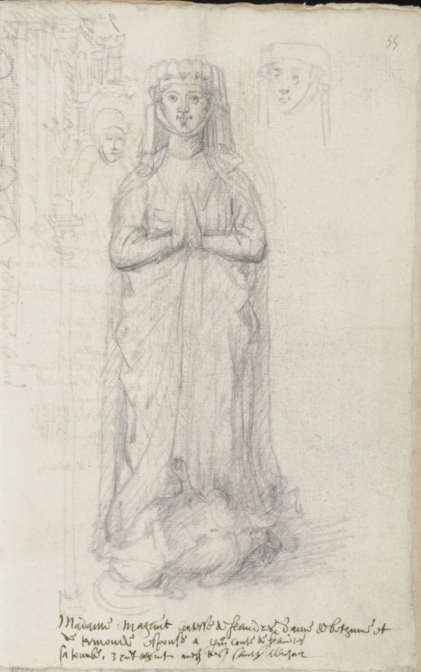
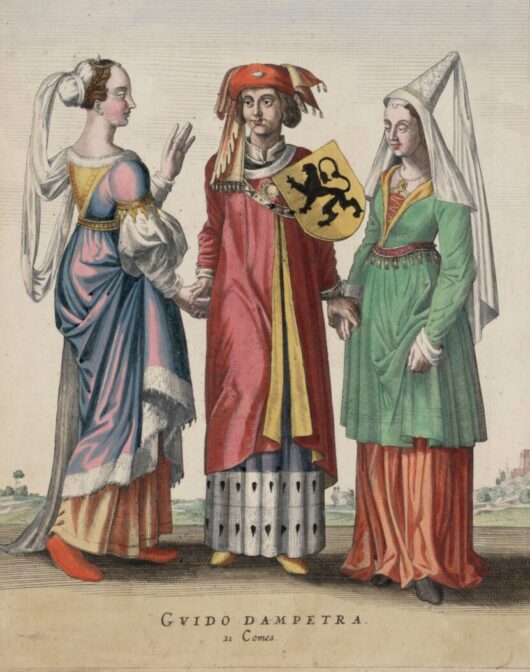
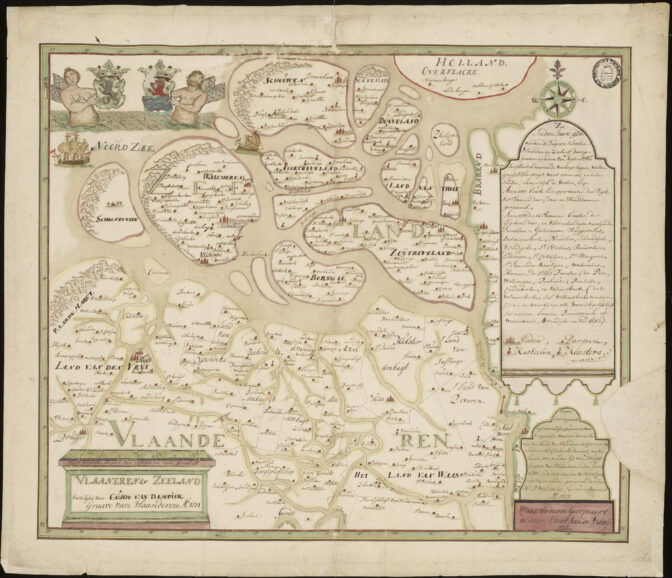
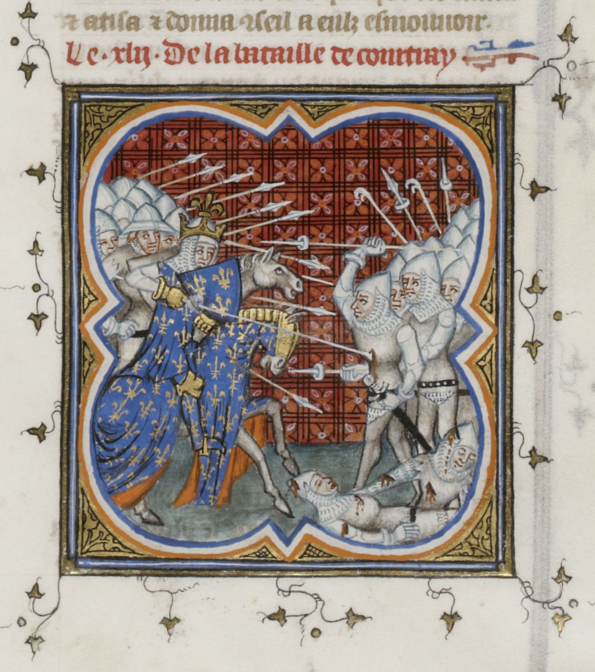
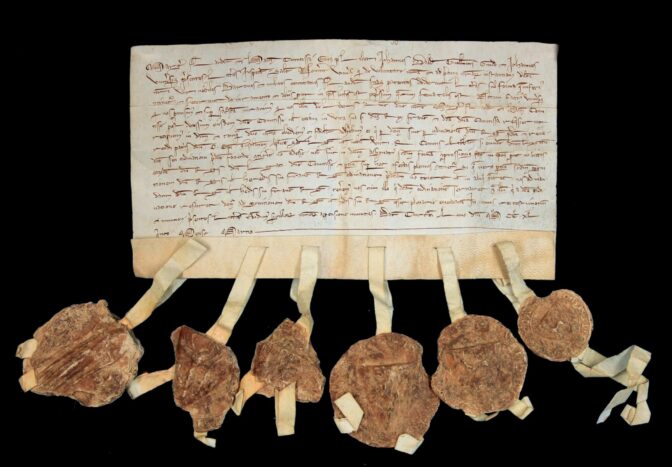
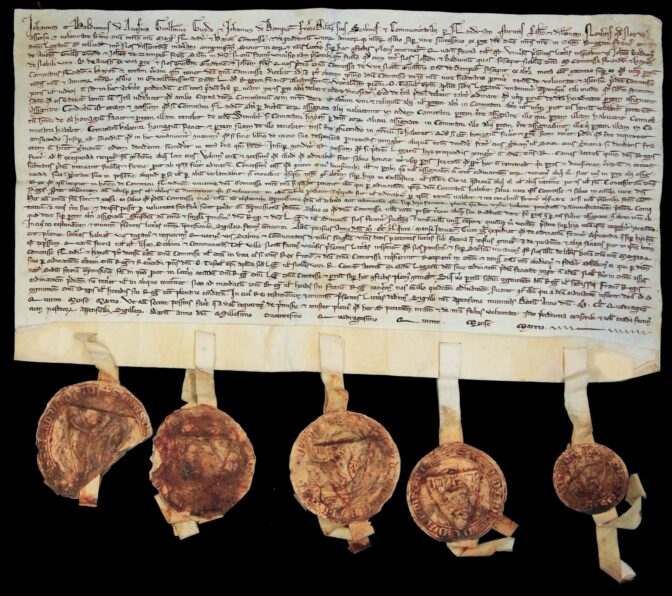
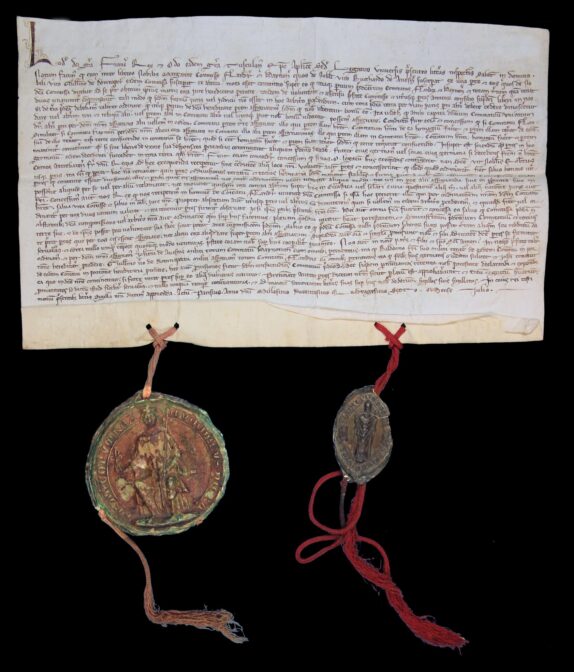
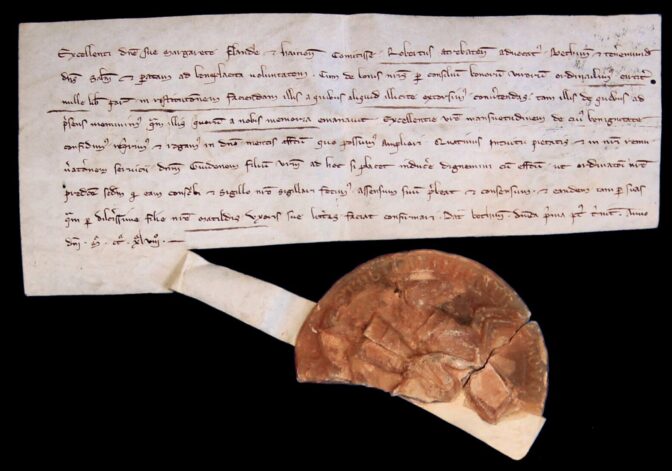
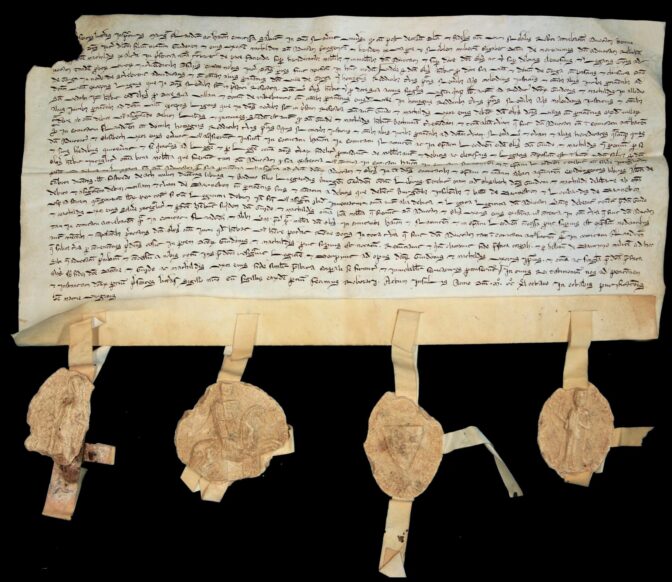
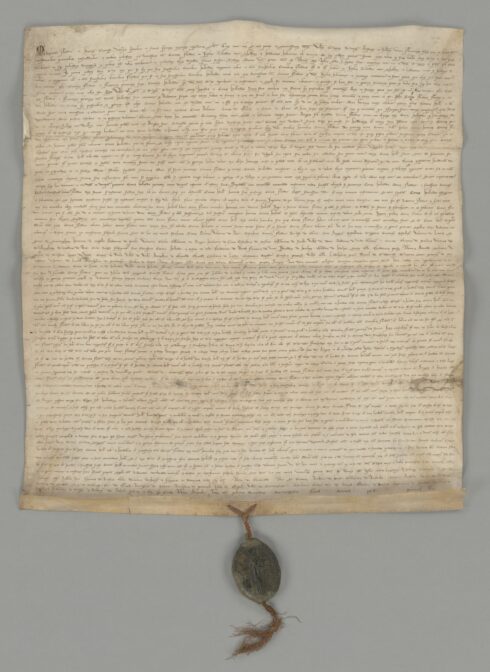
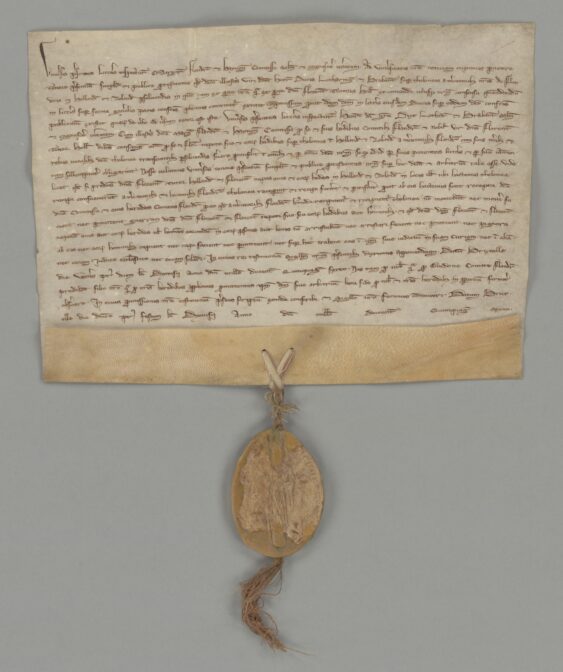
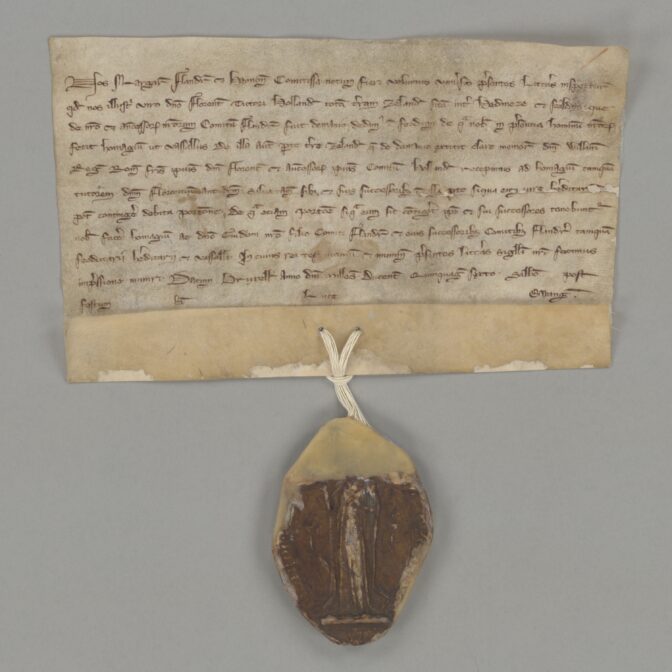
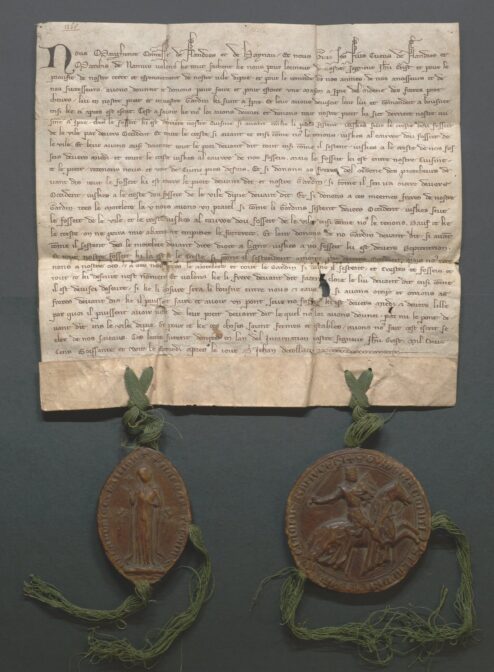


Yvette, again, how beautiful.
What a beautiful link you have added to the chain. How amazing is the condition of all documents and paintings. Those colors! As if they were applied yesterday.
Too bad we are nearing the goal and the series comes to an end, if all goes well at least.
It must be a very good feeling to be standing next to Eleanora’s tomb and knowing with certainty that she is your ancestor. It would give me goosebumps.
A big compliment from me to you.
Kind regards, Angelique.
Thank you so much! I’m loving this research so much that I’m already thinking about my next project.